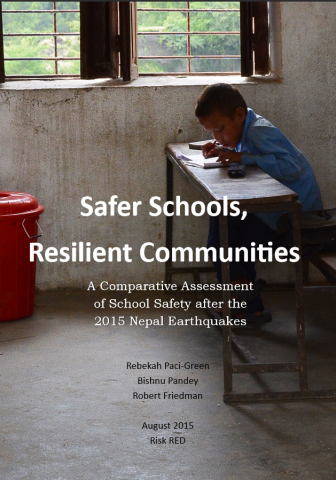Safer Schools, Resilient Communities: A Comparative Assessment of School Safety after the 2015 Nepal (Gorkha) Earthquakes


The effects of the earthquake on Nepal’s educational infrastructure offer a rare opportunity to study whether previous interventions to improve building practices, combined with community engagement, have resulted in safer schools and communities. The primary questions considered in this study were: Firstly how did damage at purportedly disaster resistant public school buildings, whether retrofitted or newly constructed, compare to damage of typical public school buildings? Secondly, what affect, if any, did community engagement around safer schools have on risk awareness and community construction practices?
The assessment of safer school construction projects, including the technical outcomes and the social impacts, shows that Nepal has both spectacular successes, which can be used as models moving forward, and notable shortcomings that can be improved in the post-earthquake reconstruction of schools.
Risk RED, August 2015.
Full Document , Executive Summary
http://media.wix.com/ugd/310a66_547fa556c3784d409a066e0a21a4b5a1.pdf, http://media.wix.com/ugd/310a66_1a13a7bd588942e390ea793f0ba13011.pdf
